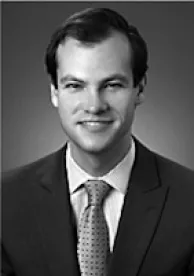Battles between brand owners are frequently fought in the United States in two forums: the Trademark Trial and Appeal Board and federal district court. While the TTAB is limited to determining a party’s right to register its trademark, district courts may adjudicate rights to registration and use of a mark. When prosecuting or defending an inter partes challenge to registration before the TTAB, brand owners are wise to consider the possible preclusive impact of the TTAB’s decision in a later-filed or concurrently pending district court action. In its recent petition for a writ of certiorari, B&B Hardware, Inc. argues that Circuit Courts of Appeal are incurably split as to whether district courts are collaterally estopped from relitigating issues decided by the TTAB. In its opposition, respondent Hargis Industries, Inc. argues that any alleged Circuit split is illusory. B&B’s petition is still pending, and the Court recently invited the Solicitor General to file a brief expressing the view of the government.
The Underlying Actions
B&B and Hargis are both in the fastener business; the former’s products are used predominantly in the aerospace industry and the latter’s in the construction of metal buildings. In 1993, B&B registered its SEALTIGHT trademark for use on “threaded or unthreaded metal fasteners and other related hardware; namely, self-sealing nuts, bolts, screws, rivets and washers, all having a captive o-ring, for use in the aerospace industry.” B&B filed an opposition to Hargis’ 1996 application to register SEALTITE for use with “self-piercing and self-drilling metal screws for use in the manufacture of metal and post-frame buildings.” After discovery and the taking of testimony, the TTAB ultimately sustained B&B’s opposition on the grounds that Hargis’ SEALTITE mark was likely to cause confusion with B&B’s SEALTIGHT mark. In a concurrently pending district court case between the parties, the court rejected B&B’s argument that the TTAB’s decision was entitled to any preclusive effect or admissible into evidence on the grounds that the TTAB is not an Article III court. The jury found for Hargis on B&B’s infringement claim and Hargis’ counterclaims, and the court awarded Hargis its attorneys’ fees under the Lanham Act’s attorneys’ fees provision.
B&B appealed the trial court’s decision to the Eighth Circuit, who affirmed. It held that the likelihood of confusion tests applied by it and the TTAB include different factors, with only some overlap between the two tests, such that they are fundamentally different standards. In particular, the Eighth Circuit held that the TTAB – which, again, determines the right to register, not use, a mark and is ultimately constrained to the marks as they appear on the face of their respective application or registration– gave inadequate weight to the use of the parties’ marks and products in the marketplace. Consequently, the issue of “likelihood of confusion,” despite bearing the same label, was governed by different standards before the TTAB and the district court, and, thus, not entitled to preclusive effect. The Eighth Circuit further held that the TTAB decision was not entitled to any deference by the district court, and that the court did not abuse its discretion by refusing to admit the decision into evidence.
Are the Circuits Split?
B&B argues in its petition for writ of certiorari that there is a four-way Circuit split with respect to the preclusive effect to be accorded prior TTAB decisions:
(1) Circuits that “unambiguously accord[] preclusive effect to TTAB decisions on likelihood of confusion,” i.e., the Third Circuit (Jean Alexander Cosmetics, Inc. v. L’Oreal USA, Inc., 458 F.3d 244 (3d Cir. 2006)) and the Seventh Circuit (EZ Loader Boat Trailers, Inc. v. Cox Trailers, Inc., 746 F.2d 375 (7th Cir. 1984));
(2) the Second Circuit, which only applies collateral estoppel if there is evidence that the TTAB compared the marks in their marketplace context (Jim Beam Brands Co. v. Beamish & Crawford Ltd., 937 F.2d 729 (2d Cir. 1991));
(3) Circuits that categorically refuse to accord preclusive effect to TTAB decisions but defer to them absent evidence to the contrary, i.e., the Fifth Circuit (Am. Heritage Life Ins. Co. v. Heritage Life Insurance Co., 494 F.2d 3 (5th Cir. 1974) and the Eleventh Circuit (Freedom Sav. & Loan Ass’n v. Way, 757 F.2d 1176 (11th Cir. 1985); and
(4) the Eighth Circuit, which does not accord TTAB decisions preclusive effect or otherwise defer to them.
On the other hand, Hargis argues that the above distinctions are illusory. According to Hargis, B&B begins with a faulty understanding of Eighth Circuit jurisprudence and the holding by the district court, arguing that it did not categorically hold that TTAB decisions are never entitled to preclusive effect. Instead, like the Second Circuit, “a TTAB finding on likelihood of confusion that accounts for the marketplace context in a meaningful way would be entitled to issue preclusive effect in a second proceeding.” Likewise, according to Hargis, the Third and Seventh Circuits do not blindly bestow preclusive effect upon TTAB decisions; instead, in the decisions cited by B&B, the parties did not dispute the identity of the likelihood of confusion question facing the TTAB and the district court, i.e., the parties did not contend that the TTAB failed to take into account market use of the marks. Finally, Hargis claims that the Fifth and Eleventh Circuits’ position that TTAB decisions cannot be preclusive but should be deferred to absent evidence to the contrary (e.g., evidence of use in the marketplace not considered by the TTAB) is a distinction without difference.
The Supreme Court’s determination as to whether there is a Circuit split, and the nature thereof, will likely go a long way in determining whether certiorari is granted and the Court determines the preclusive impact of decisions by the TTAB.



 />i
/>i
